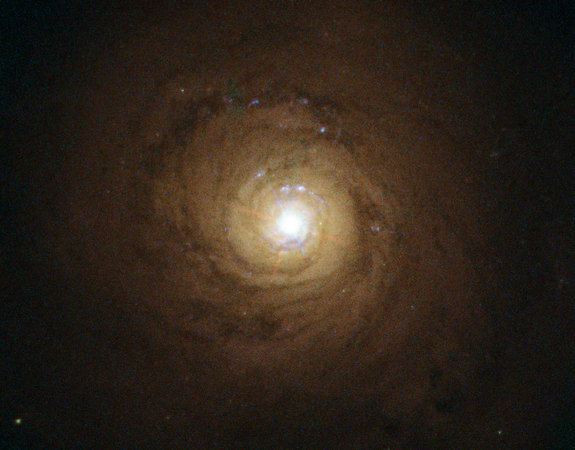Supermassive Black Hole Obscures Heart of Galaxy with 'Rare and Powerful Stream of Gas'

The luminous centre of a distant galaxy was covered by an unusual and powerful stream of gas, ejected from a supermassive black hole.
Astronomers observed that the heart of a galaxy called NGC 5548, which is situated around 245 million light-years away from Earth in the constellation Boötes, strangely darkened recently.
The galaxy has a bright, active nucleus caused by matter being pulled onto a 65 million solar mass supermassive black hole at the core. In 2013, however, astronomers noticed that something eclipsed the light from NGC 5548, which blocked around 90% of the X-ray emitted.
Using six different Nasa and European Space Agency telescopes, including the Hubble Space Telescope and NuSTAR, the researchers discovered that a stream of gas travelling up to 11 million mph was the cause.
"Astronomers have been looking at this galaxy for decades, and everyone expected it to behave normally, so seeing this galaxy's center change to a completely different state was surprising and exciting," Jelle Kaastra, lead author of the study and astronomer at the SRON Netherlands Institute for Space Research, told Space.com.

Using a model created to account for the eclipse of the nucleus, the team found that gas had begun to obscure the galaxy between August 2007 and February 2012.
"It [the gas] has travelled a distance of at least 62 billion miles," Kaastra said. "It probably has an elongated structure, with its width just 1 to 10% of its length."
The discovery may provide an insight into how supermassive black holes influence their galaxies, as although other galaxies with nearby gas streams have been spotted, the researchers said this is the first time a stream has moved into the line of sight.
"We just happened to get lucky. With most objects like this, you don't normally see this kind of event," said study co-author Gerard Kriss of the Space Telescope Science Institute in Baltimore, Maryland, as reported by ABC Science.
When matter is drawn into a black hole, it forms a structure called an accretion disk, where the material is crushed, releasing ultraviolet light and X-rays. This signals that the black hole is active.
The ultraviolet radiation can generate powerful winds exceeding 1,000km per second, which can be powerful enough to force away in-falling material, potentially cutting off the food supply to the black hole.
Occasionally, gas is blown out of the galaxy, preventing the formation of new stars.
"This new stream is most likely gas that comes from the accretion disk, the disk of gas that is swirling in toward a black hole," Kaastra said. "This disk is turbulent, filled with all kinds of bubbles and instabilities that can launch gas from the disk."
The research was published in the journal Science.
© Copyright IBTimes 2025. All rights reserved.






















